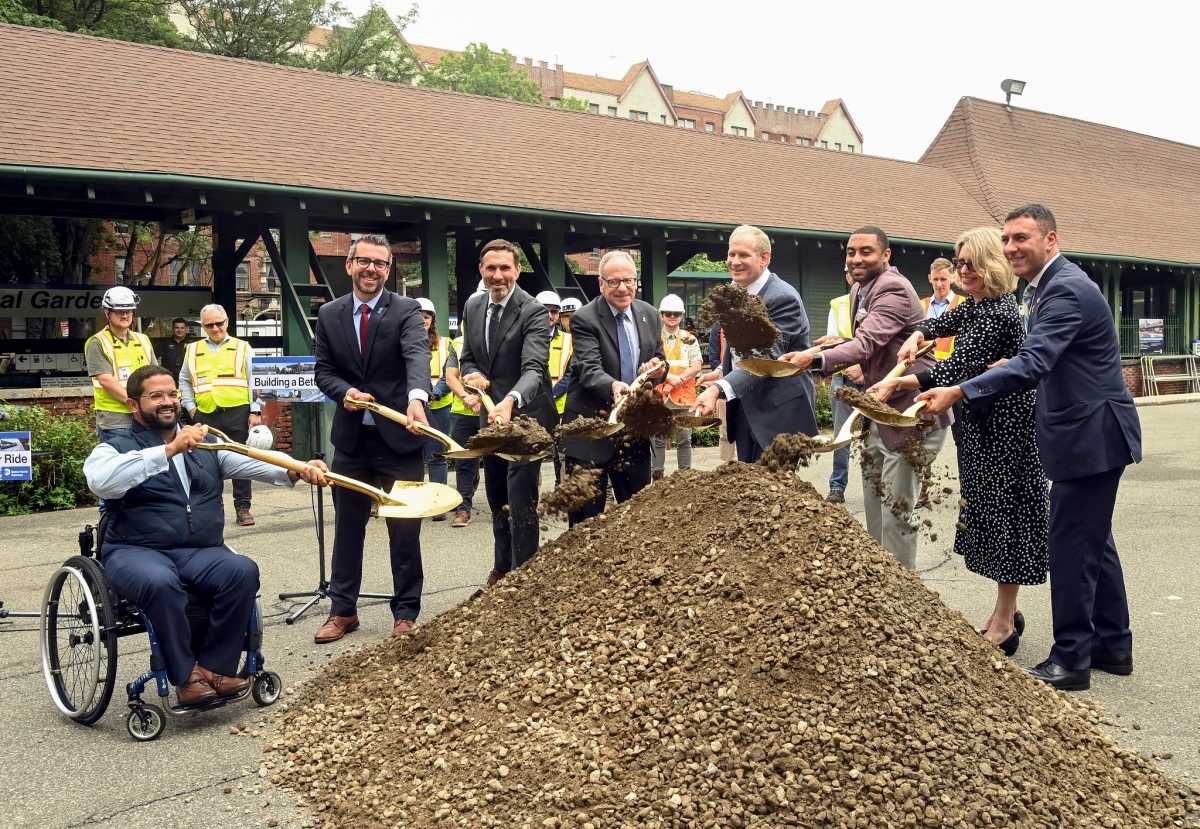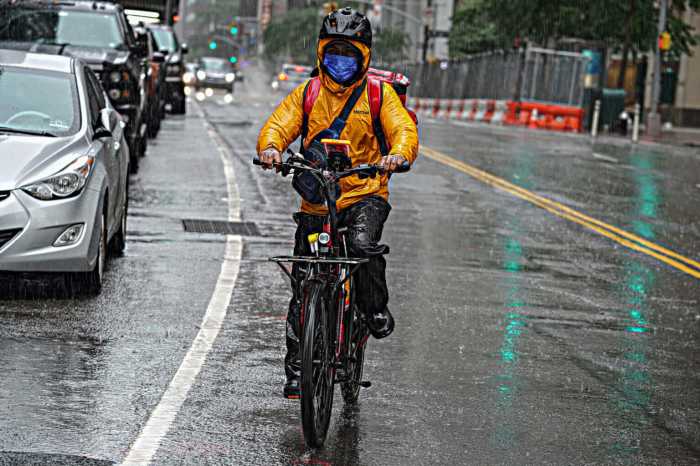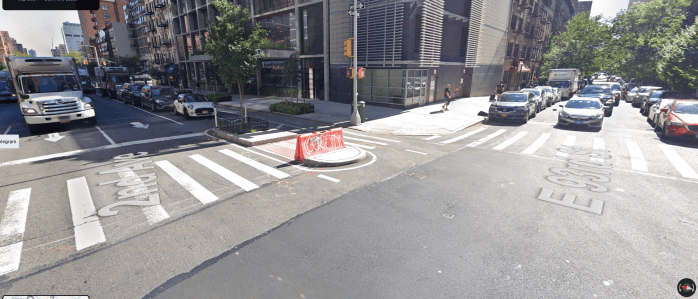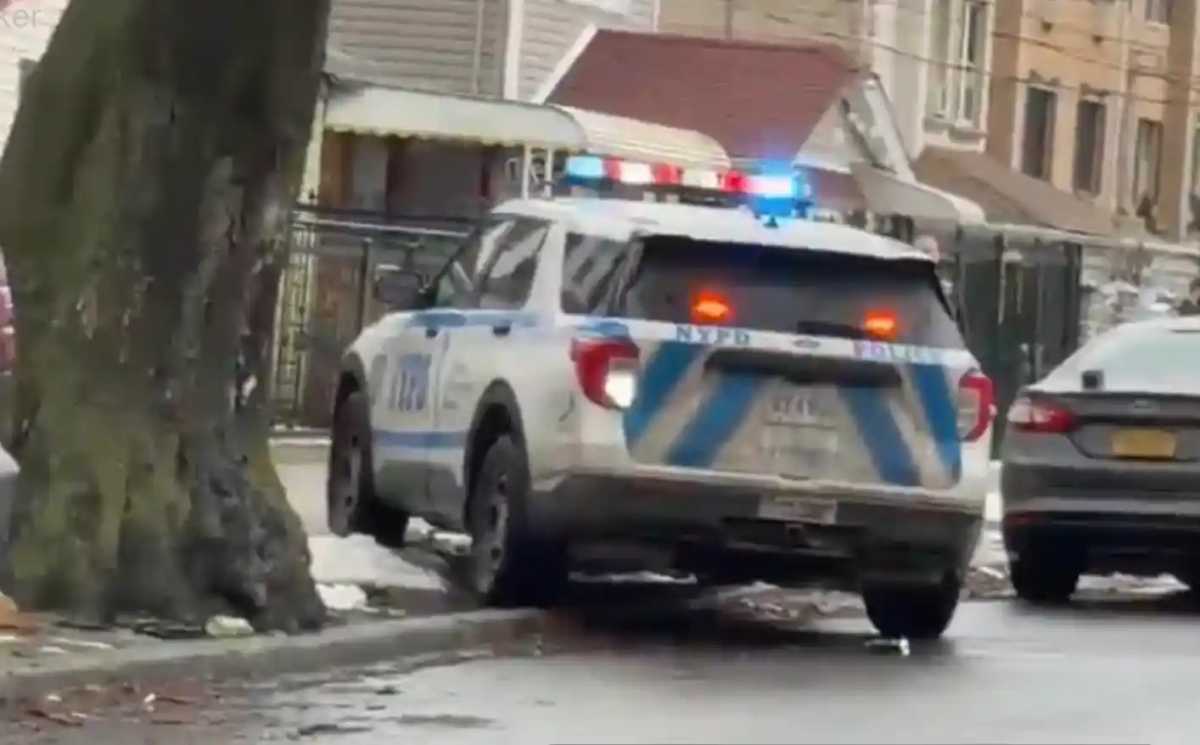The city that never sleeps made its streets and sidewalks more accessible for New Yorkers over the past year, according to a city report released on Monday.
A progress report on the first year of the NYC Department of Transportation’s (DOT) five-year accessibility plan shows that the city’s vast networks of streets and sidewalks are not just about getting from point A to point B anymore—but getting there with more ease.
From May 2024 to May 2025, the agency made what it calls a “dramatic expansion” of accessibility upgrades to make traversing the city smoother and safer for people with disabilities and all commuters.
A buzzworthy initiative, according to the report, is the installation of accessible pedestrian signals (APS) at over 3,400 intersections. These devices display non-visual information, such as tones, speech messages and vibration aimed at assisting those who are blind or have low vision safely cross streets.
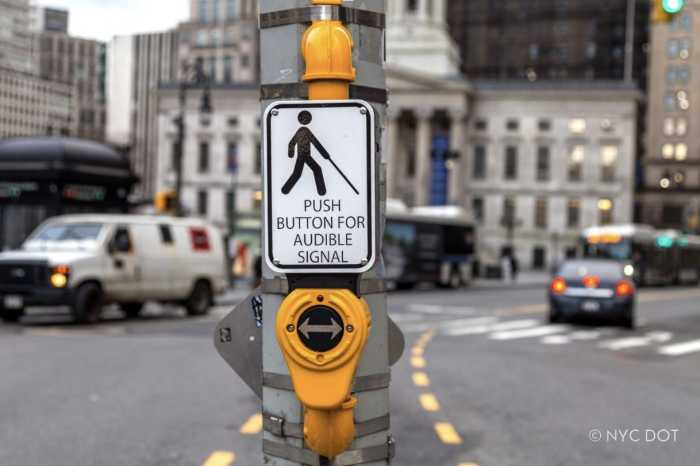
In 2021, the U.S. District Court, Southern District of New York, mandated the city to install APS at 10,000 intersections by the end of 2031. The DOT said it is aiming for full implementation of the signals at all signalized intersections by the end of 2036.
The report also shows that some bus stops underwent big fixes since last year. Historically, riders have said that many bus stops lack continuous accessible wheelchair lifts or other accessibility needs. Other commuters have complained that hulking steel columns block bus-stop access under some elevated train lines.
In response to these issues, the agency over the past year constructed bus boarding islands or curb extensions for at least two bus stops, including one at East 228th Street in the Bronx, under elevated trains aimed at making boarding easier.
Another 45 out of the city’s approximately 15,000 bus stops were made more accessible, with DOT nearly doubling its goal of 25 upgrades per year, according to the report.
“All New Yorkers and visitors deserve to safely and efficiently navigate our city streets regardless of ability,” said DOT Commissioner Ydanis Rodriguez. “New York City is the national leader in pioneering street safety improvements, and we look forward to continuing our efforts building a more accessible and equitable New York.”
Safer NYC streets and sidewalks
About 50% of all traffic injuries in the United States — and about 25% of traffic fatalities — occur in intersections, according to the Federal Highway Administration. In response to the alarming statistic, the progress report shows, the DOT installed a total of 105 raised sidewalks across all the boroughs aimed at slowing drivers at intersections and encouraging them to yield for people crossing the street.
While sidewalk maintenance is the responsibility of property owners in NYC, DOT said it repaired approximately half a million square feet of sidewalks citywide at locations adjacent to 785 properties in total over the course of the progress report.
To fix sidewalks with uneven surfaces, cracks, collapsed concrete, and other hazards, DOT inspects sites that have received complaints and issues violations to property owners, who ultimately pay for the repairs.
Meanwhile, disability advocates in NYC applauded the work that has been done so far in the city. However, they feel more needs to be done.
Jean Ryan, president of Disabled in Action, said that she has complained to the city about broken sidewalks and inaccessible bus stops but is still waiting for improvements, specifically on Shore Road in Bay Ridge.
“I complained about the inaccessibility of bus stops and the condition of the sidewalks on both sides of Shore Road in the neighborhood of Bay Ridge, Brooklyn, from Bay Ridge Avenue to 101st Street,” she said. “Wheelchair users like me have to go in the street for that 30-block stretch of winding and hilly road next to Shore Road Park because the sidewalks are too bumpy with hexagonal raised pavers, which used to be fashionable.”
Ryan would like the city to speed up work on these issues, regardless of whether repairs or improvements are court-ordered.
“The pace is not enough,” she said.
Joe Rappaport, executive director of the Brooklyn Center for Independence of the Disabled, said he appreciates the DOT’s efforts but is skeptical of some of the street improvements made this year.
“We’re skeptical of some of the improvements, particularly the bus islands,” he said. “What they end up doing is making it sometimes harder for people with low vision or who have mobility disabilities to get to the bus stop. Everybody who has to get to a bus island has to cross the street. That is typically not the case with bus stops.”
The DOT’s five-year plan fulfills the requirements of Local Law 12 of 2023, which requires all city agencies to make an accessibility plan.





